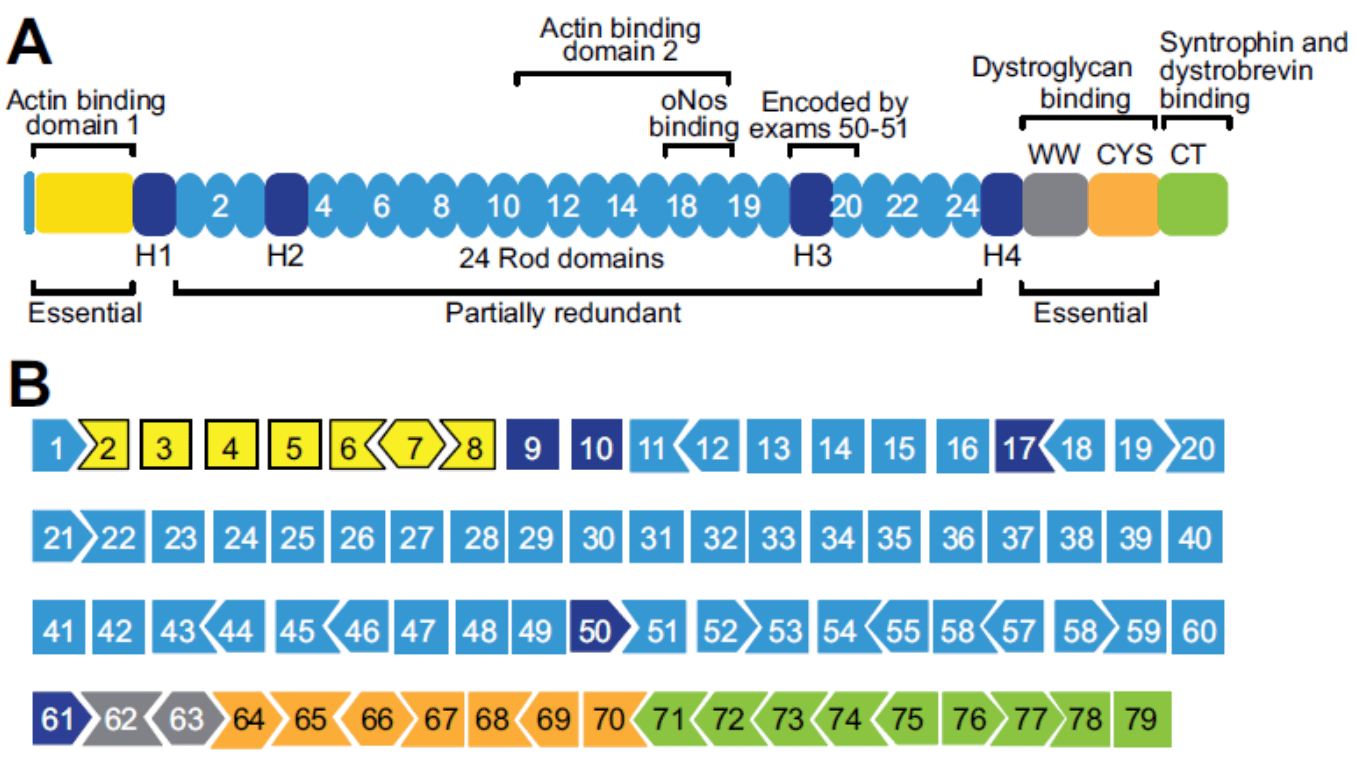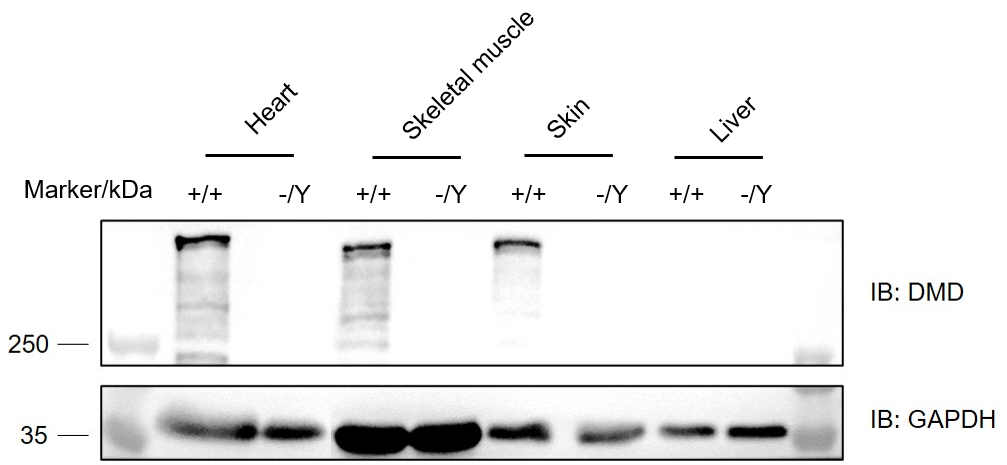DMD Mouse Model Introduction
Duchenne muscular dystrophy (DMD) is an X-linked recessive disorder and one of the most severe inherited neuromuscular diseases. It is characterized by progressive muscle weakness and neurodegenerative symptoms, and is the most common form of muscular dystrophy worldwide. DMD primarily affects males and is caused by mutations in the DMD gene on the X chromosome. These mutations result in the absence of functional dystrophin protein—a key component that links the cytoskeleton to the extracellular matrix. Dystrophin is predominantly localized on the cytoplasmic side of skeletal and cardiac muscle cells, and is also expressed in the brain.
In individuals with DMD, the loss of dystrophin disrupts the structural stability of the cell membrane, increasing membrane permeability. This leads to the influx of extracellular proteins and calcium ions, as well as the leakage of intracellular components such as creatine kinase. These disruptions trigger inflammatory responses and apoptotic pathways, ultimately resulting in muscle fiber degeneration and necrosis, as well as fibrotic tissue proliferation.
Summary of DMD models in Biocytogen
| Model type |
Model names |
Modeling reagent |
Core Index |
Optional tests |
| Duchenne muscular dystrophy (DMD) |
B-Dmd KO(del45-50) mice |
- |
Grip strength test
Rotarod test |
Inflammation analysis |
| B-hDMD(exon44-46, del45) mice |
- |
Grip strength test
Rotarod test |
Inflammation analysis |
Results
Targeting strategy for B-Dmd KO(del45-50) mice
Gene targeting strategy for B-Dmd KO (del45-50) mice.
The exons 45-50 of mouse Dmd gene were deleted in B-DMD KO(del45-50) mice.
Western blot analysis of DMD protein expression in B-Dmd KO(del45-50) mice. Various tissue lysates were collected from wild-type C57BL/6JNifdc mice (+/+) and B-Dmd KO(del45-50) mice (-/Y). DMD was detectable in heart, skeletal muscle and skin from wild-type C57BL/6JNifdc mice (+/+) but not homozygous B-Dmd KO(del45-50) mice (-/Y).
Motor function assessment in B-Dmd KO mice
Motor function assessment in wild-type C57BL/6JNifdc (5-month-old) and homozygous B-Dmd KO (del45-50) mice (5-month-old). A, Grip strength results showed the strength produced by forelimb was ~20 N/kg in homozygous B-Dmd KO (del45-50) mice, which was significant weaker than that in wild-type control mice. All grip strength measurements are normalized to the individual animal's body weight. B, Rotarod tests were performed to assay the motor coordination. The latency to fall was significantly decreased in homozygous B-Dmd KO (del45-50) mice. Values are expressed as mean ± SEM. Significance was determined by t-test. **p < 0.01, ***p < 0.001.




